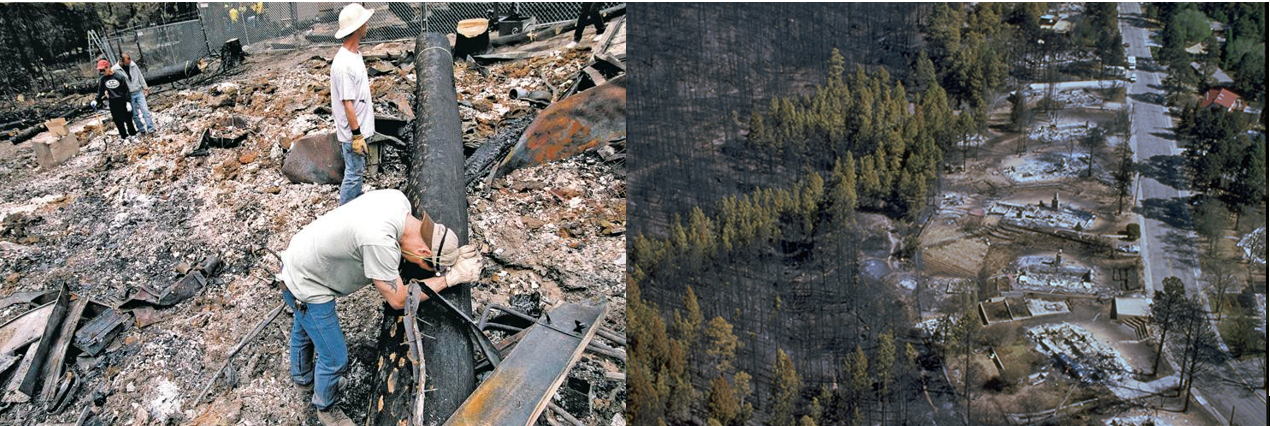Lessons Learned for the Reconstruction of Los Angeles County

The 2000 Cerro Grande Fire in Los Alamos County, New Mexico, offers critical insights for understanding and responding to the 2024 Palisades and Eaton Fires in Los Angeles County, California. Both events forced residents to flee their homes, presenting valuable lessons on disaster response and recovery.
The Cerro Grande Fire
The Cerro Grande Fire began at Bandelier National Monument due to a poorly managed controlled burn initiated by an inexperienced supervisor. Despite dry conditions, low humidity, and high winds—common in New Mexico's spring—the control burn proceeded, quickly spiraling out of control. Within ten days, the fire burned 43,000 acres and destroyed 235 homes.
Heroic efforts by individuals like Sam Gardner of SG Western and Paul and Brad Parker of Parker Construction helped save many homes. They drove their water trucks through barricades and wetted down properties, preventing the fire from spreading further into the town.
Since the fire resulted from federal actions, Senator Domenici was ever-present, ensuring the federal government followed through on its responsibility to rebuild Los Alamos County and compensate individuals and businesses for their financial losses.
Site Clearing Challenges
Many homes in Los Alamos were built with asbestos-containing materials, necessitating hazardous material testing and removal. FEMA's contractors cleared the sites to bare earth, obliterating property boundary markers like fences and trees. Homeowners had to rely on surveyors to re-establish property lines, often leading to disputes as modern survey techniques resulted in boundary corners that changed some lot sizes. Smaller lots created significant challenges for rebuilding.
Design and Pricing Hurdles
Our contract included site preparation, sidewalks, driveways, and foundations for about ten percent of the homes. Initial cost estimates were based on pre-clearing site conditions. However, FEMA's post-clearing soil redistribution altered topographies, necessitating revised pricing. Additionally, evolving building codes required frequent communication between contractors, engineers, architects, and the Los Alamos County Building Department. Homeowners were informed that initial cost estimates might increase due to these changes.
Rebuilding in a Challenging Environment
Los Alamos' remote location and 7,300-foot elevation presented logistical difficulties. Construction materials, including sand, gravel, and cement, had to be trucked 90 miles up steep terrain. Limited local suppliers meant concrete orders often required a 1—to-2-week lead time. Weather conditions—snow in winter and summer thunderstorms (lightning storms were an afternoon hazard)—further delayed construction and increased costs. Rebuilding 600 homes under these constraints was a monumental task.
Infrastructure Rebuilding
New above-ground electrical lines and the opportunity to upgrade existing underground utilities. Erosion control measures were enacted to keep the limited topsoil (bedrock is close to the surface) from washing away. Silt retainage dams were installed to stop what topsoil washed away and protect the Rio Grande River.
Conclusion
While the Los Angeles County Fire is larger in scale—12,300 structures compared to 235 in the Cerro Grande Fire—Los Alamos offers a critical case study for recovery. The percentage of homes destroyed in each area may align, underscoring the importance of proactive planning. Lessons from the Cerro Grande Fire should inform federal, state, and local government preparations for rebuilding Los Angeles County.
Next week's article will explore the reconstruction of Los Angeles County communities and provide actionable recommendations for Los Angeles' rebuilding efforts.
Author: Mick Rich, owner of Mick Rich Contractors, a New Mexico-based industrial and commercial construction company. Mick is a graduate civil engineer and professional estimator with extensive experience in infrastructure and building projects.













